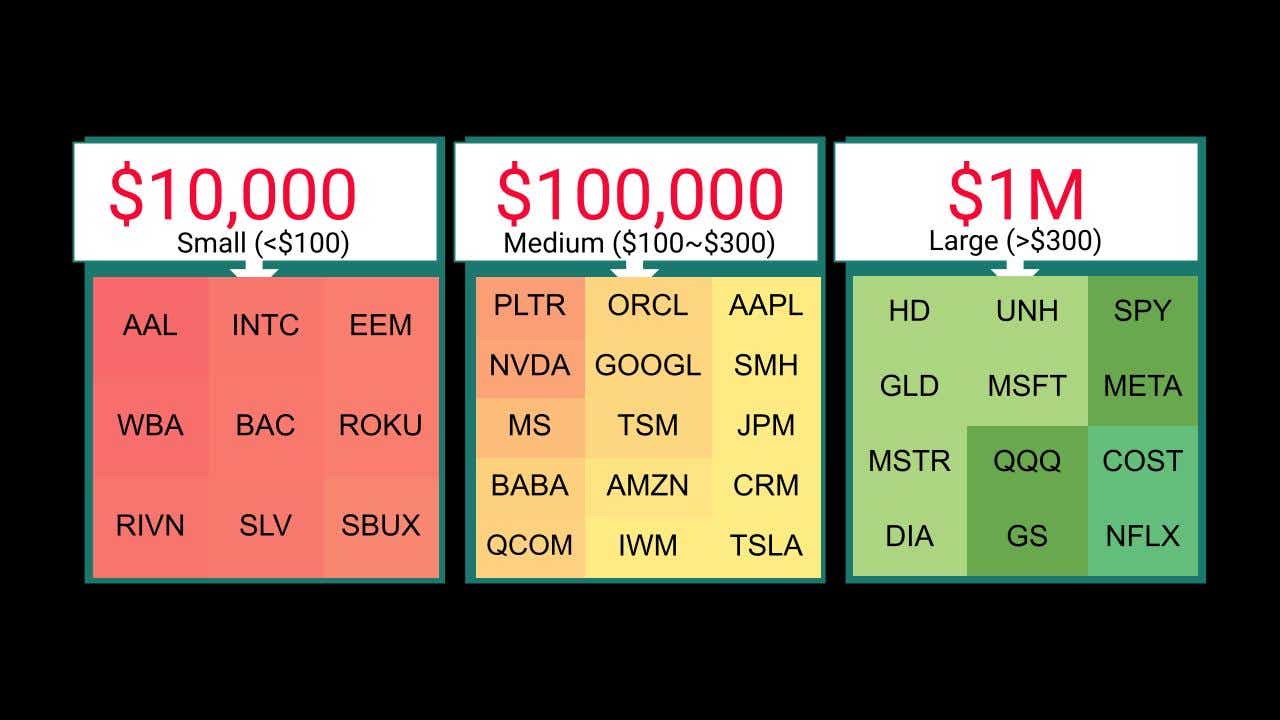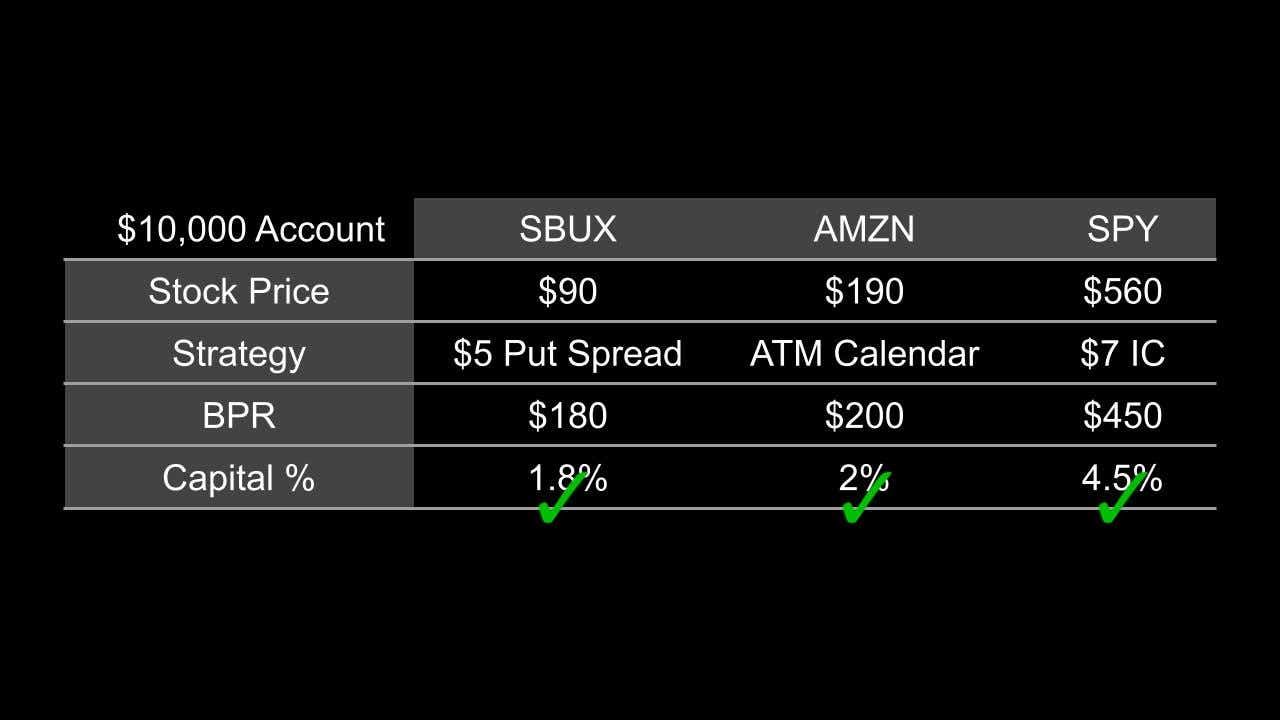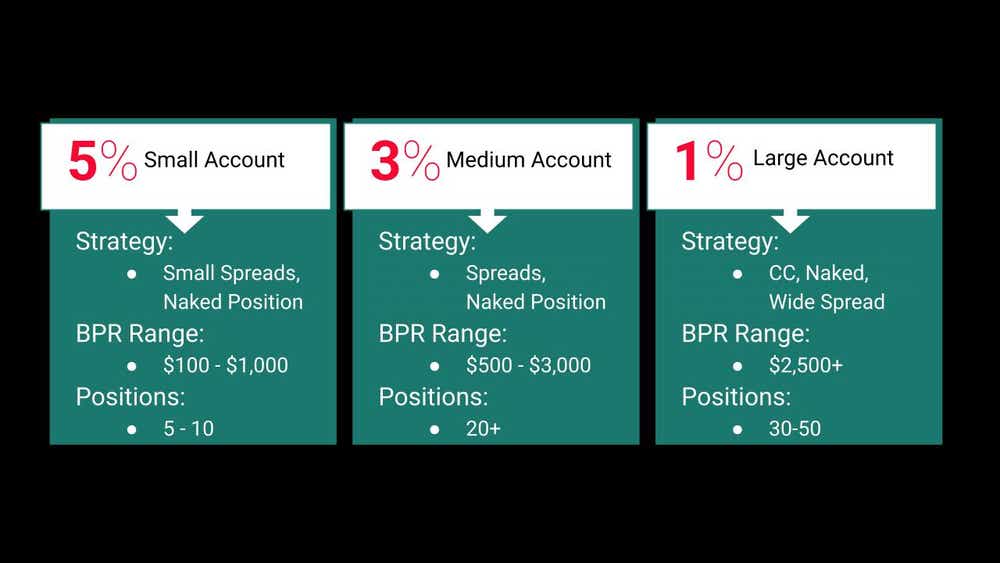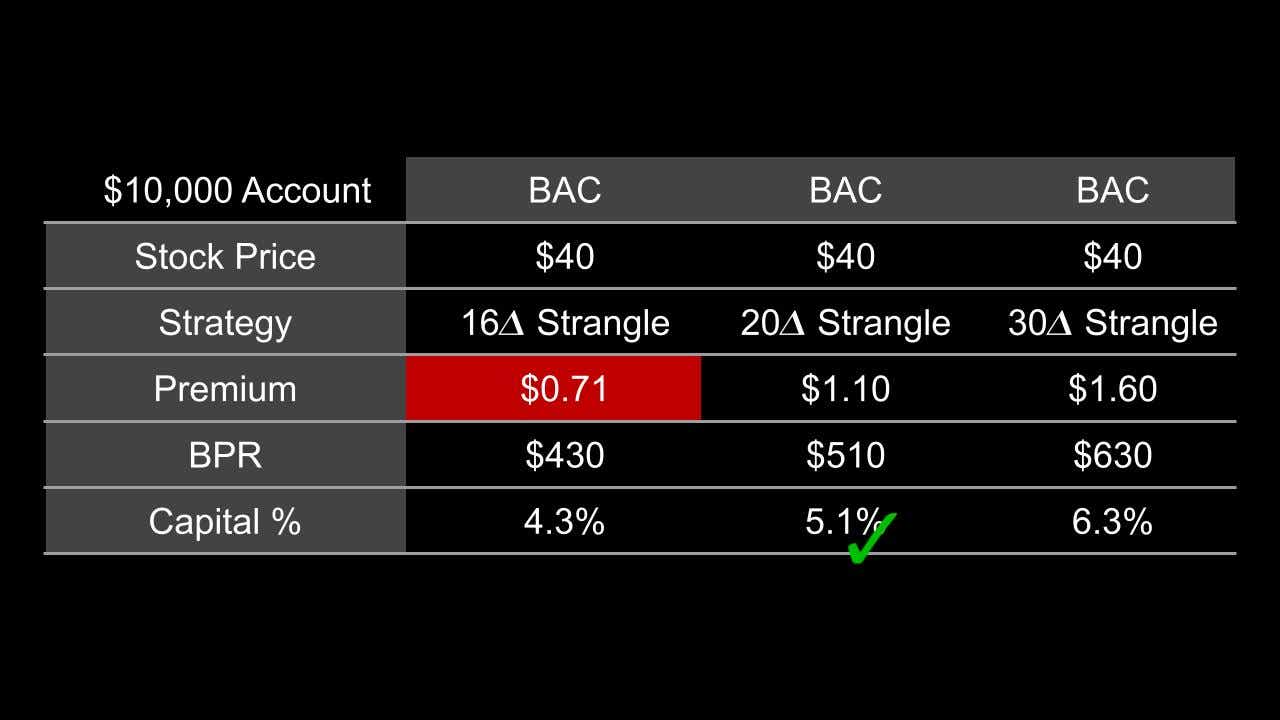How to Trade with a $10,000 Account

How to Trade with a $10,000 Account
By:Kai Zeng
Defined-risk options help you pick stocks, manage risk and grow a small portfolio
- Investors with small accounts face constraints that demand strategic adaptations.
- Adjust your position sizing and capital distribution to work effectively within those limitations.
- Success requires embracing higher risk for meaningful returns.
- For better performance, you can prioritize risk-defined strategies, allocate more capital per position and accept increased volatility.
Trading with a smaller account presents challenges that require a fundamentally different approach than managing larger portfolios. Here are the four areas to consider:
- Underlying selection. Which stocks we can realistically trade?
- Capital allocation and position count. How much should we risk per trade?
- Strategy selection. Which options strategies work best for us?
- Premium potential. How we can collect meaningful income?
Challenge 1: Stock selection constraints
Small accounts typically have to focus on more affordable stocks, while larger accounts have greater flexibility in selecting trading assets.

Our $10,000 account cannot accommodate the same opportunities as larger accounts. Even medium-priced stocks like Starbucks (SBUX) at $90 become problematic when trading naked positions, consuming 10% of our account with a single trade.
This limitation makes naked strategies (naked puts/calls, strangles/straddles) particularly challenging for small accounts because of the higher capital requirements. Small-account traders who prefer trading naked strategies often restrict themselves to inexpensive stocks, which may suffer from poor liquidity and cheap option premium.
Challenge 2: Strategy selection
To generate more trading opportunities and build a diversified portfolio, consider using risk-defined strategies such as:
- Put/Call spreads. Defined maximum loss with lower capital requirements.
- Iron condors/iron butterflies. Non-directional strategies with excellent capital efficiency.
- Time spreads. Benefit from time decay with lower cost basis.
These strategies enable traders to expand into higher-priced stocks, improving diversification across both underlyings and strategies. With these approaches, investors need significantly less capital to trade expensive higher-quality underlyings.

Challenge 3: Capital allocation and position count
A basic rule in trading is that account size and position sizing have an opposite relationship — smaller accounts typically need to put more capital into each position. For regular margin accounts, allocating 1%-3% per position represents a healthy position sizing. However, smaller accounts may need to increase this percentage to get better returns, which will also increase volatility.
When trading expensive stocks with risk-defined strategies or cheaper stocks with naked positions, consider using up to 5% per position while keeping at least five to 10 positions.

Challenge 4: Premium collection
Because smaller accounts must often focus on less-expensive stocks, collecting enough premium can be challenging. We should aim to collect at least $1 in premium per strategy to maintain reasonable risk/reward ratios and ensure transaction costs don't erode our profits.

To achieve this, we can:
- Increase individual position risk (higher delta). Trading closer to the money increases premium collection.
- Expand risk-defined strategy width. Wider spreads collect more premium but increase maximum loss potential.
- Use more expensive underlyings when possible. Higher-priced stocks typically offer better absolute premium levels.
Small account trading has certain limitations that require adjustments to position sizing and how we distribute our capital. Generally, small-account traders should use more risk-defined strategies, consider putting more capital in each position, and accept greater risk on individual positions to improve potential returns.
Kai Zeng, director of the research team and head of Chinese content at tastylive, has 20 years of experience in markets and derivatives trading. He cohosts several live shows, including From Theory to Practice and Building Blocks. @kai_zeng1
For live daily programming, market news and commentary, visit tastylive or the YouTube channels tastylive (for options traders), and tastyliveTrending for stocks, futures, forex & macro.
Trade with a better broker, open a tastytrade account today. tastylive, Inc. and tastytrade, Inc. are separate but affiliated companies.
Options involve risk and are not suitable for all investors. Please read Characteristics and Risks of Standardized Options before deciding to invest in options.
tastylive content is created, produced, and provided solely by tastylive, Inc. (“tastylive”) and is for informational and educational purposes only. It is not, nor is it intended to be, trading or investment advice or a recommendation that any security, futures contract, digital asset, other product, transaction, or investment strategy is suitable for any person. Trading securities, futures products, and digital assets involve risk and may result in a loss greater than the original amount invested. tastylive, through its content, financial programming or otherwise, does not provide investment or financial advice or make investment recommendations. Investment information provided may not be appropriate for all investors and is provided without respect to individual investor financial sophistication, financial situation, investing time horizon or risk tolerance. tastylive is not in the business of transacting securities trades, nor does it direct client commodity accounts or give commodity trading advice tailored to any particular client’s situation or investment objectives. Supporting documentation for any claims (including claims made on behalf of options programs), comparisons, statistics, or other technical data, if applicable, will be supplied upon request. tastylive is not a licensed financial adviser, registered investment adviser, or a registered broker-dealer. Options, futures, and futures options are not suitable for all investors. Prior to trading securities, options, futures, or futures options, please read the applicable risk disclosures, including, but not limited to, the Characteristics and Risks of Standardized Options Disclosure and the Futures and Exchange-Traded Options Risk Disclosure found on tastytrade.com/disclosures.
tastytrade, Inc. ("tastytrade”) is a registered broker-dealer and member of FINRA, NFA, and SIPC. tastytrade was previously known as tastyworks, Inc. (“tastyworks”). tastytrade offers self-directed brokerage accounts to its customers. tastytrade does not give financial or trading advice, nor does it make investment recommendations. You alone are responsible for making your investment and trading decisions and for evaluating the merits and risks associated with the use of tastytrade’s systems, services or products. tastytrade is a wholly-owned subsidiary of tastylive, Inc.
tastytrade has entered into a Marketing Agreement with tastylive (“Marketing Agent”) whereby tastytrade pays compensation to Marketing Agent to recommend tastytrade’s brokerage services. The existence of this Marketing Agreement should not be deemed as an endorsement or recommendation of Marketing Agent by tastytrade. tastytrade and Marketing Agent are separate entities with their own products and services. tastylive is the parent company of tastytrade.
tastyfx, LLC (“tastyfx”) is a Commodity Futures Trading Commission (“CFTC”) registered Retail Foreign Exchange Dealer (RFED) and Introducing Broker (IB) and Forex Dealer Member (FDM) of the National Futures Association (“NFA”) (NFA ID 0509630). Leveraged trading in foreign currency or off-exchange products on margin carries significant risk and may not be suitable for all investors. We advise you to carefully consider whether trading is appropriate for you based on your personal circumstances as you may lose more than you invest.
tastycrypto is provided solely by tasty Software Solutions, LLC. tasty Software Solutions, LLC is a separate but affiliate company of tastylive, Inc. Neither tastylive nor any of its affiliates are responsible for the products or services provided by tasty Software Solutions, LLC. Cryptocurrency trading is not suitable for all investors due to the number of risks involved. The value of any cryptocurrency, including digital assets pegged to fiat currency, commodities, or any other asset, may go to zero.
© copyright 2013 - 2025 tastylive, Inc. All Rights Reserved. Applicable portions of the Terms of Use on tastylive.com apply. Reproduction, adaptation, distribution, public display, exhibition for profit, or storage in any electronic storage media in whole or in part is prohibited under penalty of law, provided that you may download tastylive’s podcasts as necessary to view for personal use. tastylive was previously known as tastytrade, Inc. tastylive is a trademark/servicemark owned by tastylive, Inc.